Discovery of Text From Carlson Said to Be Damning
Nicole Avery Nichols to Edit Detroit Free Press
Dowd’s Newsroom Nostalgia Prompts Blowback
Retired N.Y. Anchor to Back Up Story of Trump Rape
Marie Nelson to Boost Documentaries in Canada
Short Takes: Robert F. Kennedy Journalism Awards; changing approaches to covering crime; “What a Black Man Discovered about the White Mother He Never Knew”; training aspiring journalists from different backgrounds; end of some Sinclair local broadcasts; Lauren N. Williams; “Dear Mama: The Saga of Afeni and Tupac Shakur”; Jerry Gray; Henri Cauvin; “Hammer and Hope,” “a magazine for the Black Left”; Howard U.’s new president and Afro-Latin diaspora; NPR’s Leila Fadel, Michel Martin, Ayesha Rascoe and Juana Summers; Tonya Mosley; Lisa Wilson and Leon Carter; searching and detaining journalists at ports of entry; Egypt releases Al Jazeera journalist
Homepage photo: CNN’s Elle Reeve, who has covered the Proud Boys from their earliest days, discusses the rise of this paramilitary group with Reality Check’s John Avlon (from video)
In Orlando, the “Trust Index” at WKMG answered the question, “Was Antifa involved in attack on the Capitol?” (Credit: YouTube)
Discovery of Text From Carlson Said to Be Damning
“A text message sent by Tucker Carlson that set off a panic at the highest levels of Fox on the eve of its billion-dollar defamation trial showed its most popular host sharing his private, inflammatory views about violence and race,” Jeremy W. Peters, Michael S. Schmidt and Jim Rutenberg reported Tuesday for The New York Times.
“The discovery of the message contributed to a chain of events that ultimately led to Mr. Carlson’s firing.
“In the message, sent to one of his producers in the hours after violent Trump supporters stormed the Capitol on Jan. 6, 2021, Mr. Carlson described how he had recently watched a video of a group of men — Trump supporters, he said — violently attacking ‘an Antifa kid.’
“It was ‘three against one, at least,’ he wrote.
“And then he expressed a sense of dismay that the attackers, like him, were white.
“ ‘Jumping a guy like that is dishonorable obviously,’ he wrote.
“ ‘It’s not how white men fight,’ he said. But he said he found himself for a moment wanting the group to kill the person he had described as the Antifa kid. . . .”
 The revelation did not impress Jonathan Goldblatt (pictured), CEO of the Anti-Defamation League. Goldblatt tweeted, “What’s not news is the fact that Tucker Carlson is a white nationalist. What is news is the fact that this somehow is surprising to anyone.”
The revelation did not impress Jonathan Goldblatt (pictured), CEO of the Anti-Defamation League. Goldblatt tweeted, “What’s not news is the fact that Tucker Carlson is a white nationalist. What is news is the fact that this somehow is surprising to anyone.”
Nevertheless, The Washington Post immediately jumped on the story. Sarah Ellison wrote, “The text message, first reported Tuesday night by the New York Times, added to a cascading set of concerns about Carlson within Fox News that led the company to fire him last week, according to several people familiar with the internal deliberations around his departure from the network.”
Ellison also wrote, “After seeing the message, the board alerted Fox executives that it planned to retain a law firm to investigate Carlson’s behavior, according to a person familiar with the matter who spoke on the condition of anonymity to describe sensitive discussions. . .”
“While the text, acquired during the discovery process of Dominion Voting Systems’ defamation case against Fox, remains redacted from court exhibits, board members feared it could become public during the trial. Days later, on April 18, Fox settled the case with Dominion for $787.5 million. . . .”
- Charles M. Blow, New York Times: Tucker Carlson, ‘White Men’ and the Lynch Mob Mentality
- Oliver Darcy, CNN: Tucker Carlson’s racist text message shouldn’t be surprising: Analysis
- A.J. Katz, TV Newser: Week of April 24 Basic Cable Ratings: Fox News Remains No. 1 Despite Significant Primetime Tumble
- Media Matters for America: Daily Wire’s Matt Walsh defends Tucker Carlson’s racist text message
- Media Matters for America: Charlie Kirk passionately defends Tucker Carlson’s racist text message
- Laura Miller, Slate: Did That Text Really Do In Tucker Carlson?
- Jack Shafer, Politico Magazine: What’s Really Behind the Release of Tucker Carlson’s Texts
- Erik Wemple, Washington Post: Even Tucker Carlson knew Tucker Carlson was out of control
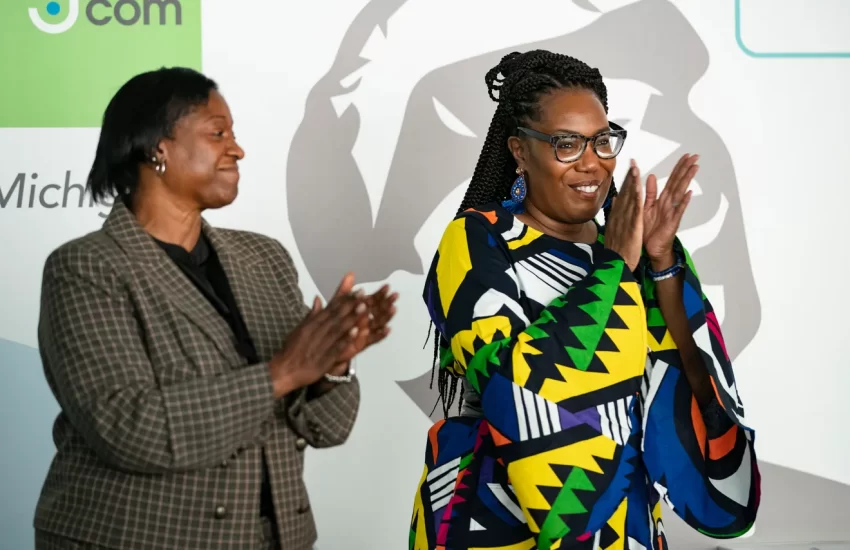
Nicole Avery Nichols to Edit Detroit Free Press
“Nicole Avery Nichols, who has reported and edited news in Detroit for more than 25 years, leading coverage that has ranged from culture and the culinary arts to education and the COVID-19 pandemic, has been named the new top editor of the Detroit Free Press,” JC Reindl reported Wednesday for the Free Press.
“Avery Nichols, 53, returns to the Free Press following a stint of more than two years as editor-in-chief of Chalkbeat, a nationwide journalism nonprofit focused on education. She left the newspaper for Chalkbeat in February 2021 and continued to reside in metro Detroit with her husband and two children. She had started at the Free Press in 2000 after being recruited from the Detroit News.
“Avery Nichols is the first Black woman to become the editor of the Free Press. The previous editor, Peter Bhatia, departed early this year. . . .
“ ‘I firmly believe in centering people and their experiences within the heart of journalism, and I am thrilled to be leading one of America’s most powerful newsrooms as we tell the stories that matter most,’ Avery Nichols said. ‘I look forward to engaging new audiences amid our ever-changing and diversifying media landscape.
“As top editor of Chalkbeat, Avery Nichols was responsible for newsroom operations and a national reporting team with bureaus in Detroit, New York, New Jersey, Philadelphia, Indiana, Chicago, Tennessee and Colorado.
“In her previous roles at the Free Press, she supervised teams of reporters and wide areas of coverage, including music, religion, immigration, federal courts, race, restaurants, public health and the pandemic. . . .”
In 2020, Gannett, which owns the Free Press, announced a broad initiative to make its workforce as diverse as the country by 2025 and to expand the number of journalists focused on covering issues related to race and identity, social justice and equality.
- Jordyn Grzelewski, Detroit News: Free Press names veteran Detroit journalist Nicole Avery Nichols as top editor

Dowd’s Newsroom Nostalgia Prompts Blowback
A New York Times column by Maureen Dowd, whose cheeky irreverence helped win her a Pulitzer Prize, is facing blowback from critics who say that this time, she is not irreverent enough.
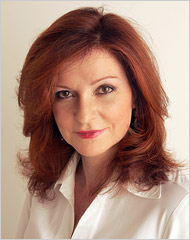 To the approval of many newsroom veterans who circulated the column via social media and email accounts, Dowd (pictured) wrote an ode to the pre-pandemic newsrooms when reporters worked in the office, not from home. “There was an incredible camaraderie and panache about the whole endeavor, whether we were pursuing stories about murder, politics or the breeding woes of the pandas at the National Zoo,” Dowd said.
To the approval of many newsroom veterans who circulated the column via social media and email accounts, Dowd (pictured) wrote an ode to the pre-pandemic newsrooms when reporters worked in the office, not from home. “There was an incredible camaraderie and panache about the whole endeavor, whether we were pursuing stories about murder, politics or the breeding woes of the pandas at the National Zoo,” Dowd said.
The columnist wrote Saturday as contract negotiations between the Times and the New York Times Guild drag on, with more than 1,100 Times staffers staging a 24-hour strike in December. How often staffers are required to come into the office is an issue on the table. Nikole Hannah-Jones, a staffer at the New York Times Magazine, where the “1619 Project” got its start, was quoted in Columbia Journalism Review then as saying, “I don’t ever come in this building anymore, it seems like. But I am truly honored to stand here with my Times colleagues.”
Writing Tuesday for Fairness and Accuracy in Media, Ari Paul contended that Dowd “used her column space deliberately to attack the Times union for pushing for more remote and hybrid work, as post-pandemic many office workers have seen the benefits of such scheduling.”
Journalists of color and women have experienced the thrill of adrenaline rushes on deadline and the information-sharing that comes from in-person contact, just like everyone else. Nevertheless, Paul said, Dowd ignores the good-old-boy nature of many newsrooms that led to protests — and lawsuits — from those same journalists of color and women.
The issue has become generational, Paul added. “Generally, a younger generation has embraced flexible scheduling because for all the romanticizing of the so-called water cooler, the 9-to-5 grind has also included workplace sexual harassment, challenging physical environments for the disabled and other structural inequalities. Hybrid work doesn’t solve these issues, but these problems are the flip side to the rosy image of the days of yore.”
On Twitter, veteran broadcast journalist Soledad O’Brien imagined a quote, ” ‘…Mostly there were middle aged white men, especially in positions of power and gatekeeping, who were often perplexed about covering communities they had no interest in, personally, at all…’ ” She messaged Journal-isms Wednesday, “let’s be real — the past of newsrooms was not inclusive for poc or for women. And pretending otherwise is obnoxious.”
A 1988 clip features Carol Martin on WCBS-TV, reporting on that night’s Rockefeller Center tree lighting, with a little of the history behind it. (Credit: YouTube)
Retired N.Y. Anchor to Back Up Story of Trump Rape
- May 4 update: E. Jean Carroll’s friend testifies that they didn’t ‘scheme’ to make up a rape allegation to ‘stop’ Trump (Ashley Collman and Jacob Shamsian, Insider)
The New York courtroom evaluating E. Jean Carroll’s accusation that she was raped by Donald Trump in a New York department store is expected to hear corroboration this week from Carol Martin, a retired African American television anchor who says that Carroll confided in her at the time.
As reported in this space in 2019, Martin, the first African American female news anchor on WCBS-TV’s noon, 5 p.m. and 6 p.m. newscasts, told The New York Times that Carroll described the events in a kitchen conversation that took place within three days of the 1996 incident. Trump denies Carroll’s story.
“She doesn’t break down easily. There was none of that . . . that she started crying or anything, or nothing frantic . . . . It was like ‘I can’t believe this happened,’ ” Martin told Times reporter Megan Twohey.
Martin worked at WCBS from 1975 to 1995. Afterward, wrote Twohey, Jessica Bennett and Alexandra Alter, Carroll and Martin both had shows on America’s Talking, a cable channel run by Roger Ailes, the late founder of Fox News Channel. A LinkedIn profile lists Martin as president of the New York area-based Flying Minds Productions, Inc.
In those days, Carrol wrote an advice column for Elle. She completed three days on the witness stand Monday in a civil trial in Manhattan federal court.
She described the alleged assault “in searing and graphic detail,” in the words of the Daily News in New York. News organizations, including the News and the New York Times, did not shy away from reporting those details.
- Rebecca Falconer and Sara Fischer, Axios: Judge dismisses Trump’s lawsuit against New York Times
Marie Nelson to Boost Documentaries in Canada
Marie Nelson (pictured), a senior vice president at ABC News who has held executive positions at PBS, WGBH in Boston, NPR and BET, is heading to Toronto.
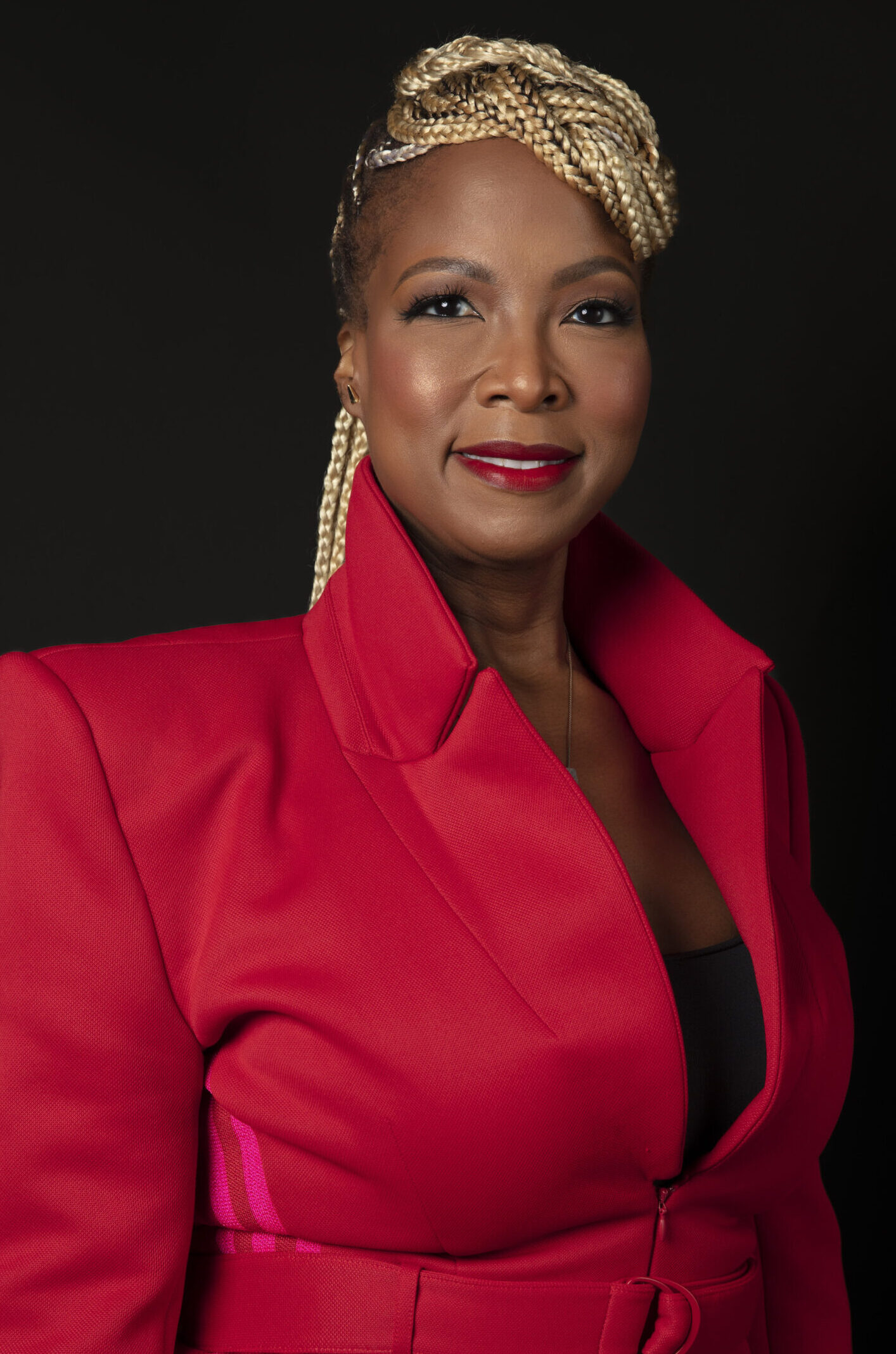 On Monday, Nelson was named president of Hot Docs, which stages an international film festival and performs related work year-round.
On Monday, Nelson was named president of Hot Docs, which stages an international film festival and performs related work year-round.
The company describes itself as “a not-for-profit organization dedicated to advancing and celebrating the art of documentary and to creating production opportunities for documentary filmmakers.
“Its annual spring festival in Toronto is North America’s largest documentary festival, conference and market, which welcomes thousands of international delegates for a full rich program of conference sessions, networking and market initiatives, including the renowned Hot Docs Forum, a leading international co-financing pitch event.”
The departure of Nelson, who starts in June, comes as ABC News implements its part of a plan by the parent Disney Co. to cut 7,000 positions. ABC News has laid off several senior executives and is restructuring its newsroom, Reuters has reported. Vanity Fair and the New York Post have described internal turmoil.
“Feels like Christmas morning, my birthday and the first day of school wrapped in one!” Nelson wrote on LinkedIn. “Thanks to the incredible Hot Docs team for the warm welcome despite the freezing temps in Toronto this week. We will do great things together. Let’s go!”
At ABC, Nelson “led a brand and content strategy that pioneered and developed inclusive and diverse-led content for television, streaming and film audiences,” a Hot Docs release said. “She successfully built multicultural audiences, launching groundbreaking, Emmy award-winning nonfiction programs like the ABC/Hulu/Disney+/Star series ‘Soul of a Nation’ that doubled the diverse audience composition of ABC’s primetime slate and captured 11 Emmy nominations.
“Ms. Nelson partnered with teams across The Walt Disney Company and Nikole Hannah Jones, Oprah Winfrey, Harpo, The New York Times, and Lionsgate to secure and develop the Pulitzer prize-winning ‘The 1619 Project’ docuseries for Hulu Originals.
“Prior to ABC News, Ms. Nelson was Vice President for News and Independent Film at PBS where she oversaw programming for such prestigious documentary series as Frontline, Independent Lens and POV. During her tenure, those series produced several Academy Award-nominated and short-listed feature films, including ‘I Am Not Your Negro’, ‘Abacus’, ‘Black Panthers: Vanguard of the Revolution’, ‘One Child Nation’, and ‘Minding the Gap.’ She has also held executive positions at WGBH in Boston, National Public Radio as well as at Viacom/BET Networks. . . .”
- Ted Johnson, Deadline: ABC News Launches Month-Long Racial Reckoning Project On ‘Nightline,’ Other Shows (Sept. 8, 2020)
Short Takes

- An investigation by Chicago public station WBEZ into the 2018 beating death by corrections officers of handcuffed Black inmate Larry Earvin was among the winners Wednesday of the Robert F. Kennedy Journalism Awards. All three ex-officers were found guilty; the last sentenced in March. This year’s Book Award went to “The Third Reconstruction: America’s Struggle for Racial Justice in the Twenty-First Century” by historian Peniel Joseph.
- “Across the United States local journalists are attempting to reform their approach to covering crime, moving away from ‘If it bleeds, it leads’ and toward explanatory and accountability reporting,” Kelly McBride wrote April 11 for the Poynter Institute. “Newsrooms are implementing policies designed to encourage deep reporting on public safety trends. And, they are discouraging common journalism habits that can amplify false stereotypes, like rampant use of police mugshots, or relying on police press releases as the sole source of information for stories. . . .” KING-TV in Seattle is one example, Paul Greely wrote Monday for TVNewsCheck.
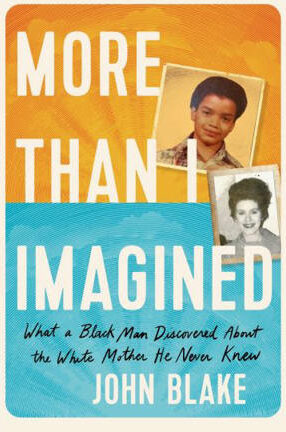 If “you think growing up as a young Black man in my neighborhood was tough, try doing it as the son of a Black father and a white mother in a place where many despise white people,” Baltimore-born CNN journalist John Blake writes in an excerpt from his new memoir, “More Than I Imagined: What a Black Man Discovered about the White Mother He Never Knew.” Blake continues, “And if you want to talk about Black anger . . . I have a little experience with that topic. Try reconciling with your white family while they claim they were never racist — even though they thought that Black and white people should be kept separate and even though one referred to your father as ‘this nigger.’ . . .”
If “you think growing up as a young Black man in my neighborhood was tough, try doing it as the son of a Black father and a white mother in a place where many despise white people,” Baltimore-born CNN journalist John Blake writes in an excerpt from his new memoir, “More Than I Imagined: What a Black Man Discovered about the White Mother He Never Knew.” Blake continues, “And if you want to talk about Black anger . . . I have a little experience with that topic. Try reconciling with your white family while they claim they were never racist — even though they thought that Black and white people should be kept separate and even though one referred to your father as ‘this nigger.’ . . .”
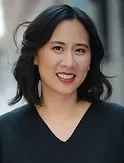 “Politico founder and publisher Robert Allbritton has already committed $20 million to launch the Allbritton Journalism Institute, a non-profit educational organization that says it will train aspiring reporters from different backgrounds and who have different views to create ‘fact-based, non-partisan journalism on government and politics’ that is ‘both empathetic and brutally honest,’ ‘” Max Tani reported Monday for Semafor. “The institute will launch a yet-to-be-named news organization that will publish work from the fellows . . . Former National Press Club Journalism Institute Program Director Andie Coller (pictured) will help develop the AJI curriculum, while journalists including Tim Alberta, DeNeen L. Brown, Eric M. Garcia, and Dianna Heitz will serve as mentors.”
“Politico founder and publisher Robert Allbritton has already committed $20 million to launch the Allbritton Journalism Institute, a non-profit educational organization that says it will train aspiring reporters from different backgrounds and who have different views to create ‘fact-based, non-partisan journalism on government and politics’ that is ‘both empathetic and brutally honest,’ ‘” Max Tani reported Monday for Semafor. “The institute will launch a yet-to-be-named news organization that will publish work from the fellows . . . Former National Press Club Journalism Institute Program Director Andie Coller (pictured) will help develop the AJI curriculum, while journalists including Tim Alberta, DeNeen L. Brown, Eric M. Garcia, and Dianna Heitz will serve as mentors.”
- “Five Sinclair Broadcast Group stations will cease all local news broadcasts in two weeks after layoffs eliminated most or all of their respective news teams,” Michael Stahl reported Monday for TVNewsCheck. “The affected stations are WNWO Toledo, Ohio; KTVL Medford, Ore.; KPTM Omaha, Neb.; WGFL Gainesville, Fla.; and KPTH Sioux City, Iowa. . . .”
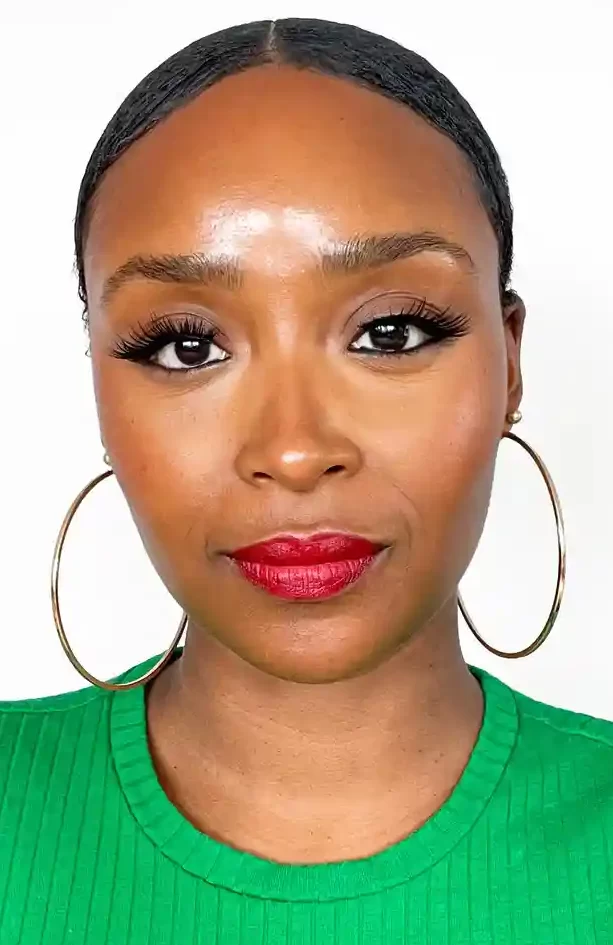 “Guardian US has appointed Lauren N. Williams as its new deputy editor for race and equity,” the Guardian announced Monday. “Williams will lead editorial coverage on race, identity, and inequality across all teams and desks in the Guardian US newsroom. She starts on May 30. . . . Williams joins Guardian US following a five-year tenure at The Atlantic, most recently as a senior editor where she launched a vertical dedicated to the complexity of American identity, and commissioned idea-driven pieces on religion, subcultures, the arts, sports, and socio-political movements. . . .”
“Guardian US has appointed Lauren N. Williams as its new deputy editor for race and equity,” the Guardian announced Monday. “Williams will lead editorial coverage on race, identity, and inequality across all teams and desks in the Guardian US newsroom. She starts on May 30. . . . Williams joins Guardian US following a five-year tenure at The Atlantic, most recently as a senior editor where she launched a vertical dedicated to the complexity of American identity, and commissioned idea-driven pieces on religion, subcultures, the arts, sports, and socio-political movements. . . .”
- “Afeni Shakur and her son, Tupac Shakur, lived nearly 35,000 days combined — and very few of those days seemed to have brought either one of them real peace,” Justin Tinsley wrote Friday for Andscape. “In Dear Mama: The Saga of Afeni and Tupac Shakur, FX’s sprawling new five-part docuseries directed by Allen Hughes, we get a look at the trials and triumphs of the mother-son duo who fought — against racist systems, cops, their own demons, and rivals — for the majority of their lives. . . .”
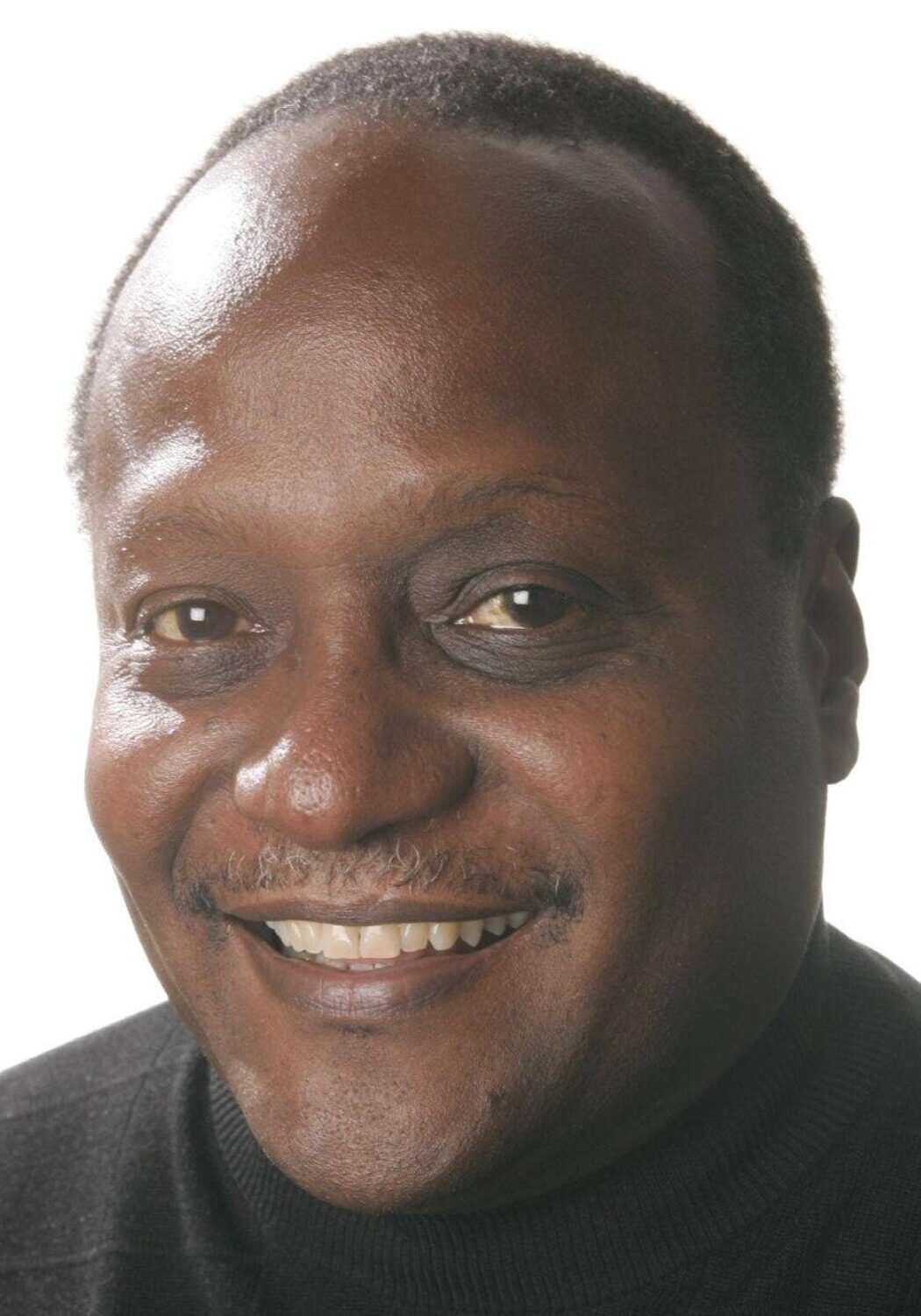 “Jerry Gray, who was already the weekend editor on National when I took over the desk in 2005, has agreed to become our next New York-based deputy on the International Edition,“ Suzanne Daley, associate managing editor for international print, wrote Tuesday to the New York Times staff.
“Jerry Gray, who was already the weekend editor on National when I took over the desk in 2005, has agreed to become our next New York-based deputy on the International Edition,“ Suzanne Daley, associate managing editor for international print, wrote Tuesday to the New York Times staff.
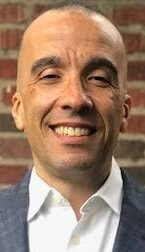 Henri Cauvin, a senior editor at ProPublica from 2018 to 2022, is returning to The New York Times. He “is joining National as a deputy editor and will edit coverage of crime, legal issues, immigration and the Mid-Atlantic,” National Editor Jia Lynn Yang said Friday in a memo. “Before joining ProPublica, he was city editor at The Times, where he started as an editor on the Metro Desk in 2013. . . .”
Henri Cauvin, a senior editor at ProPublica from 2018 to 2022, is returning to The New York Times. He “is joining National as a deputy editor and will edit coverage of crime, legal issues, immigration and the Mid-Atlantic,” National Editor Jia Lynn Yang said Friday in a memo. “Before joining ProPublica, he was city editor at The Times, where he started as an editor on the Metro Desk in 2013. . . .”
 “Hammer & Hope,” called by The Nation “a magazine for the Black Left,” launched in February after two or so years of planning. “The first issue features eleven works — including contributions from organizers who influenced the magazine — that outline and exemplify its mission,” Feven Merid wrote April 12 for Columbia Journalism Review. “In one of the articles, KC Tenants, a tenants union in Kansas City, details how it uses direct action to end evictions. . . . In another piece, Olúfẹ́mi O. Táíwò offers a framework through which to understand Hammer and Hope’s position as a magazine of Black politics. While many media organizations still downplay their political impact, Hammer and Hope is certain about its own. ‘By publishing stories from movements around the world, we hope to provide a platform for a politics of struggle that is built from the bottom up,’ ” write Keeanga-Yamahtta Taylor, a contributing writer at The New Yorker and professor at Northwestern University, and Jen Parker, a former editor at The New York Times.
“Hammer & Hope,” called by The Nation “a magazine for the Black Left,” launched in February after two or so years of planning. “The first issue features eleven works — including contributions from organizers who influenced the magazine — that outline and exemplify its mission,” Feven Merid wrote April 12 for Columbia Journalism Review. “In one of the articles, KC Tenants, a tenants union in Kansas City, details how it uses direct action to end evictions. . . . In another piece, Olúfẹ́mi O. Táíwò offers a framework through which to understand Hammer and Hope’s position as a magazine of Black politics. While many media organizations still downplay their political impact, Hammer and Hope is certain about its own. ‘By publishing stories from movements around the world, we hope to provide a platform for a politics of struggle that is built from the bottom up,’ ” write Keeanga-Yamahtta Taylor, a contributing writer at The New Yorker and professor at Northwestern University, and Jen Parker, a former editor at The New York Times.
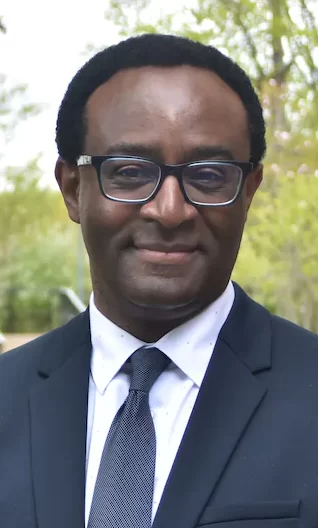 Ben Vinson III (pictured), a historian of the African diaspora in Latin America who heads academic operations at Case Western Reserve in Cleveland, will become the next president of Howard University, Nick Anderson reported Tuesday for the Washington Post. The news was greeted with joy by George Reid Andrews, co-editor of “Voices of the Race: Black Newspapers in Latin America, 1870-1960,” published last year. “I have known Ben for many years, and he is the perfect person for this job. I don’t think Howard could possibly have done better!” Andrews messaged Journal-isms. Asked whether Vinson’s interest in the subject might make a difference in the School of Communications curriculum, Dean Gracie Lawson-Borders replied, “It’s too early for us to answer your question. We have to wait until our new 18th President Dr. Ben Vinson arrives on campus and meets with Communications and other schools and colleges.”
Ben Vinson III (pictured), a historian of the African diaspora in Latin America who heads academic operations at Case Western Reserve in Cleveland, will become the next president of Howard University, Nick Anderson reported Tuesday for the Washington Post. The news was greeted with joy by George Reid Andrews, co-editor of “Voices of the Race: Black Newspapers in Latin America, 1870-1960,” published last year. “I have known Ben for many years, and he is the perfect person for this job. I don’t think Howard could possibly have done better!” Andrews messaged Journal-isms. Asked whether Vinson’s interest in the subject might make a difference in the School of Communications curriculum, Dean Gracie Lawson-Borders replied, “It’s too early for us to answer your question. We have to wait until our new 18th President Dr. Ben Vinson arrives on campus and meets with Communications and other schools and colleges.”
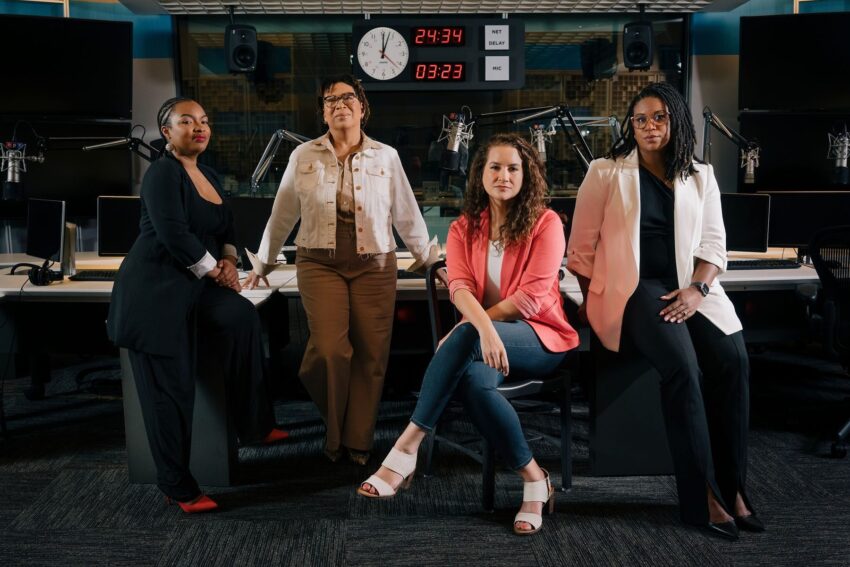
color who have taken over host chairs at flagship NPR programs over the past
year. Story by Jennifer Gerson; photo by Lexey Swall for The 19th.
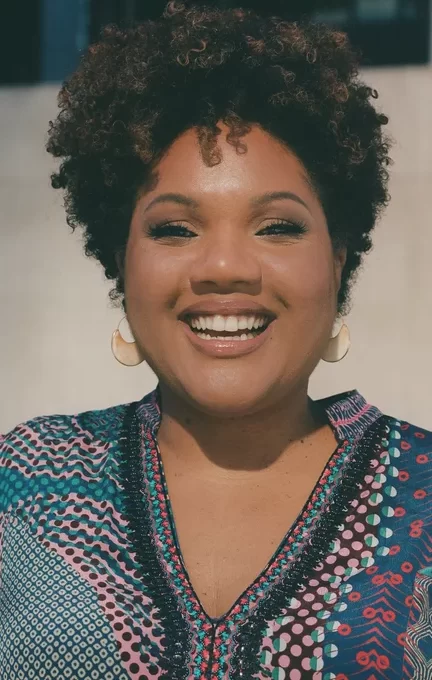 “Award-winning public media journalist Tonya Mosley (pictured) has been named co-host of Fresh Air with Terry Gross, the radio program and podcast devoted to contemporary arts and issues, produced by WHYY in Philadelphia and distributed by NPR,” the network announced April 26. “Terry Gross will continue as Co-Executive Producer and Host. . . .”
“Award-winning public media journalist Tonya Mosley (pictured) has been named co-host of Fresh Air with Terry Gross, the radio program and podcast devoted to contemporary arts and issues, produced by WHYY in Philadelphia and distributed by NPR,” the network announced April 26. “Terry Gross will continue as Co-Executive Producer and Host. . . .”
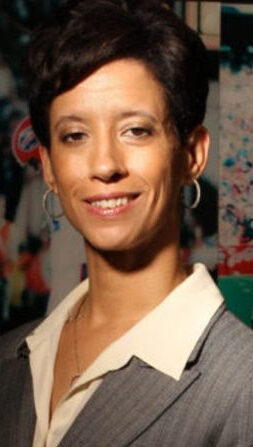 In a “remaking” of The Athletic newsroom’s top-level structure, Editorial Director Lisa Wilson (pictured) becomes editorial director – culture, opinion and talent, Executive Editor Steven Ginsberg announced Monday. Wilson’s “new mission is to attract the next generation of great Athletic journalists, while ensuring that all employees have fulfilling and opportunity-filled careers. She will form a tight partnership with Leon Carter and the People and Talent team, while spearheading newsroom DEI efforts, establishing best-in-class career coaching and pathing programs, fostering an inclusive culture and serving as a conduit between employees and the growth opportunities they seek throughout their careers at The Athletic. The Culture and Opinion teams will continue to report to Lisa. . . .” In addition, Claudio Cabrera was named editorial director – audience, and Ginsberg said Carter “will continue to play a leading role in talent development, while also partnering with me to help shape coverage and oversee newsroom operations. Leon will also develop and oversee The Athletic’s first internship program, which will launch in 2024 and be named after him. We anticipate that this program will help attract promising young talent who will help fulfill our editorial mission. . . .”
In a “remaking” of The Athletic newsroom’s top-level structure, Editorial Director Lisa Wilson (pictured) becomes editorial director – culture, opinion and talent, Executive Editor Steven Ginsberg announced Monday. Wilson’s “new mission is to attract the next generation of great Athletic journalists, while ensuring that all employees have fulfilling and opportunity-filled careers. She will form a tight partnership with Leon Carter and the People and Talent team, while spearheading newsroom DEI efforts, establishing best-in-class career coaching and pathing programs, fostering an inclusive culture and serving as a conduit between employees and the growth opportunities they seek throughout their careers at The Athletic. The Culture and Opinion teams will continue to report to Lisa. . . .” In addition, Claudio Cabrera was named editorial director – audience, and Ginsberg said Carter “will continue to play a leading role in talent development, while also partnering with me to help shape coverage and oversee newsroom operations. Leon will also develop and oversee The Athletic’s first internship program, which will launch in 2024 and be named after him. We anticipate that this program will help attract promising young talent who will help fulfill our editorial mission. . . .”
- “Around the world, authorities at ports of entry are granted latitude to search and detain incoming travelers, conduct interrogations without the presence of a lawyer, and even make copies of digital information on phones and laptops,” Jem Bartholomew reported Tuesday for Columbia Journalism Review. “These tactics, using laws designed to prevent terrorism, are being deployed against journalists with alarming regularity. There were 40,913 electronic-device searches by US Customs and Border Protection (CBP) officers on the eve of the pandemic in the 2019 fiscal year, rising more than fourfold from 8,503 searches in 2015. . . . .”
- “Egyptian authorities have released Al Jazeera journalist Hisham Abdelaziz after he was held for almost four years in pre-trial detention,” Al Jazeera reported Monday. “Abdelaziz, an Egyptian journalist for the network’s Mubasher channel, was released early on Monday. . . . Abdelaziz was arrested in June 2019 after he was stopped while traveling from Qatar, where he was based, to Cairo for a family visit. He was one of a number of Al Jazeera journalists to be detained in Egypt since the 2013 coup that overthrew President Mohamed Morsi. His detention was repeatedly extended for what Al Jazeera had previously described as ‘baseless allegations’ and led to a deterioration in his health. Egypt was one of four countries – along with Saudi Arabia, the United Arab Emirates and Bahrain – to boycott Qatar, where Al Jazeera is based, in 2017. . . .”
Do Media Tailor Reporting to the Powerful?
May 2, 2023
Question, Some Say, Is How Oppressed Can Be Heard
Journal-isms Roundtable photos by Sharon Farmer/sfphotoworks
Support Journal-ismsDonations are tax-deductible.
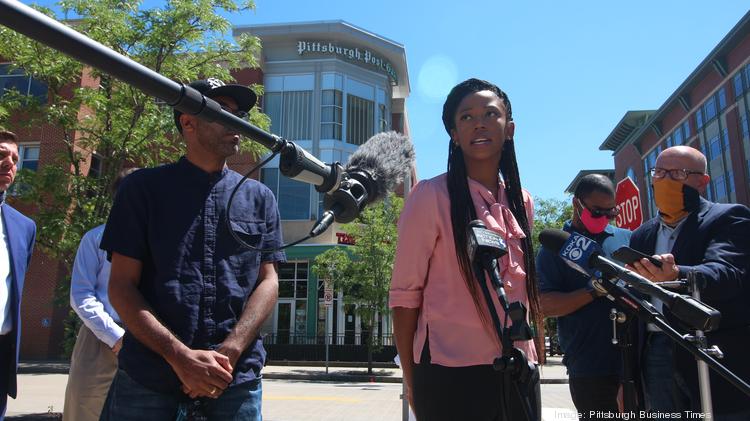
Question, Some Say, Is How Oppressed Can Be Heard
By Isaiah Jerome Lewis Poole
True or false?
“Most of the reporting that we see from our mainstream media is just disproportionately targeting power and ignores the oppressed.”
True, in the view of mainstream media leaders who say newsroom diversity means more than changing the demographics of their staffs. They say it also speaks to fundamentally altering who is served by newsroom decisions.
The quotation comes from Terrell Jermaine Starr, an independent Black journalist who has gained prominence for his unorthodox reporting style while covering the war in Ukraine, offering opinions and sometimes being directly involved in the story, such as by helping Ukrainians escape to safety.
Starr is believed to be the only Black journalist who has consistently reported from that country. He recently returned from Israel, tweeting in March when back in the United States, “I’m setting up an appointment with my therapist and my pastor. I’m in Brooklyn and I still feel [traumatized] by what I saw in the West Bank. I woke up over the past few days on the verge of vomiting. Seriously. What’s happening to Palestinians is that oppressive and violent.”
(On May 2, Khader Adnan, a leader in the militant Islamic Jihad group, became the first long-term hunger striker to die in Israeli custody. Adnan, 45, was protesting Israel’s mass detentions of Palestinians without charges or trials.)
That belief prompted his comment on Western coverage of the oppressed. He says he connected the dots in looking at coverage of those around the world who are not in positions of power. Starr is also completing a book, “A Black Man’s Guide to Eastern Europe.”
Starr spoke at the Zoom Journal-isms Roundtable on April 17, which began with a discussion of the legacy of the late Randall Robinson, the anti-apartheid activist and advocate for the African diaspora who died March 24 at 81.
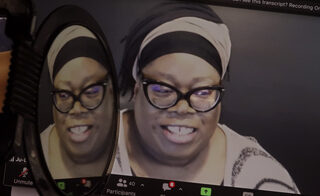 Attendees also toasted Ju-Don Marshall (pictured), just named president and CEO of WFAE, the public radio station in Charlotte, N.C.
Attendees also toasted Ju-Don Marshall (pictured), just named president and CEO of WFAE, the public radio station in Charlotte, N.C.
Marshall said she was trying “to expand our public media station here and move, you know, boldly into the digital realm. Public media has been a little bit behind other legacy media in moving towards digital.” With her were WFAE’s Gwendolyn Glenn and Sarah Smith, who “are also helping us engage more with communities of color, and, you know, through culturally competent journalism.”
Forty-six people were on the Zoom, with 213 more watching on Facebook and 64 on YouTube, as of May 1. You can watch the video embedded below or on the YouTube site.
Forty-six were on the Zoom, with 213 more watching on Facebook and 64 on YouTube, as of May 1.
The American Press Institute, part of the News Media Alliance, an organization of publishers, says it “advances an innovative and sustainable news industry by helping publishers understand and engage audiences, grow revenue, improve public-service journalism, and succeed at organizational change.”
Last year, API developed an “inclusion index,” which included a project involving five Pittsburgh media outlets. API says the index aims to help news outlets build deeper bonds of trust with communities of color and to provide more accurate and complete coverage of those communities’ challenges and triumphs. The project concluded earlier this year.
“Journalists often don’t think about the power imbalance at play in our relationships with our communities and the people who live in them,” said Michael D. Bolden, the API’s CEO and executive director. “News organizations have the power to harm and to heal, and unfortunately, we have seen too much of the former in our history. It’s imperative that individual journalists and organizations be aware of that dynamic and work to connect people to each other and to the information they need, and to empower our democratic society to live up to its promise.”

Newspaper readers in Addis Ababa, Ethiopia, 2004. “Privileged audiences may be concerned about, say, sensationalism, but they rarely pay a personal price. Disadvantaged communities do,” the Reuters Institute and the University of Oxford found. (Credit: Joseph Girmay/Flickr/Creative Commons)
A report by the Reuters Institute and the University of Oxford released April 18, was based on a sweeping set of focus group interviews in four countries. It found that people from disadvantaged communities saw “persistent misrepresentation and underrepresentation in coverage” of their issues and interests. That report also found that those marginalized, especially in the United States, United Kingdom and India, widely viewed news media outlets as “an extension of systems aligned to serve those in power …. News media were rarely seen as catering to the entire public so much as reinforcing the interests of those already most privileged and powerful.” (The fourth country covered by the report was Brazil.)
That issue is not new. In 1968, the Kerner Commission, in its report on the roots of Black unrest in the mid-1960s, said, “The media report and write from the standpoint of a white man’s world. The ills of the ghetto, the difficulties of life there, the Negro’s burning sense of grievance, are seldom conveyed. Slights and indignities are part of the Negro’s daily life, and many of them come from what he now calls ‘the white press’ — a press that repeatedly, if unconsciously, reflects the biases, the paternalism, the indifference of white America.”
Pushing against journalism practiced from “the standpoint of a white man’s world” was very much part of Robinson’s legacy.
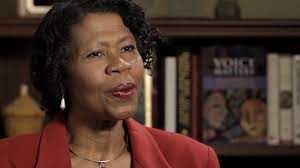 Gwen McKinney (pictured, via Facebook), a communications specialist who worked closely with Robinson and TransAfrica during its campaigns against South African apartheid and U.S. policies toward Haiti, remembered him as an “extremely sophisticated” activist who “understood that media was a critical element to launching these campaigns and not losing, but winning.”
Gwen McKinney (pictured, via Facebook), a communications specialist who worked closely with Robinson and TransAfrica during its campaigns against South African apartheid and U.S. policies toward Haiti, remembered him as an “extremely sophisticated” activist who “understood that media was a critical element to launching these campaigns and not losing, but winning.”
Robinson — along with Roundtable speakers McKinney and Cecelie Counts, TransAfrica’s political director — was hailed for helping journalists like former NBC News producer Allison Davis (pictured, below), Washington Post columnist Courtland Milloy, CBS News reporter Randall Pinkston and NPR journalist Brenda Wilson get stories about Africa and the Caribbean on the air that otherwise might not have surfaced.
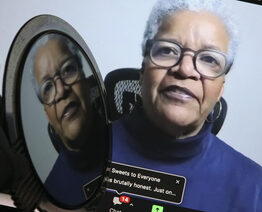 “I remember so vividly trying to explain to my executive producer where South Africa was and, and why this was important, and you would bring these wonderful voices. And then it was up to me,” Davis said.
“I remember so vividly trying to explain to my executive producer where South Africa was and, and why this was important, and you would bring these wonderful voices. And then it was up to me,” Davis said.
“I was the only Black show producer at the time to convince folks that this was not only a story that needed to be done, but this was a story that we really did need to educate people about, a side of the world that they very rarely heard about.”
Wilson recalled a risky move she made as a junior producer on NPR’s “Morning Edition” when the show was about to air a segment on U.S. policy on South Africa featuring Britain’s Lord Peter Carington, who was allied with the Reagan administration’s posture of “constructive engagement” with the apartheid regime.
“They were going to have Lord Carington on the air on ‘Morning Edition’, and nobody else to say anything about it, . . . And I don’t know what I knew, but I knew enough at the time, even though I was a 20-something, to call Randall.”
Wilson told Robinson, “‘Randall, you need to get here at 5 in the morning.’ And sure enough, he showed up at 5 in the morning … And we sat around and chatted, and he went live as a counterpoint to [Lord Carington.] And the senior producer came in shortly after Randall had done what he did. And he said, it worked. It worked. You still have a job. It worked. You know, because Randall was so good.”
(Counts also corrected many obits that noted that Robinson taught at Penn State Law School starting in 2008. While technically accurate, he taught remotely from St. Kitts, she said.)
Starr argued at the Roundtable that injecting nonwhite perspectives into foreign news coverage is still tantamount to an act of rebellion.
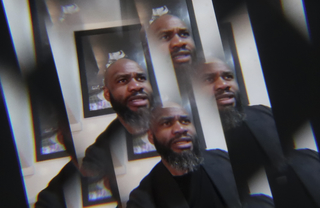
In his coverage, “I leveraged my experience as a Black person who grew up in Detroit, Michigan, and who lives in New York and talks about the various forms of how inequity functions here in the United States, and I take that experience and it guides me wherever I see it across the world, even with white people who are in Ukraine.”
Starr continued, “Most of the reporting that we see from our mainstream media is just disproportionately targeting power and ignores the oppressed because that language is not even used. I’m not sure that an editor at The New York Times, for example, or Politico would even allow ‘oppression’ or ‘oppressed people’ to go through their copy-editing process. And so I find that to be the fundamental problem,” in addition to “the lack of people of color” in media to cover “a world that’s full of nonwhite people in the majority that’s governed by a minority of white people.”
How does this change?
The Reuters Institute report recommended that media organizations be more diligent about making their reporting more accurate and less biased, tell more positive and complete coverage of diverse communities, hire journalists and news executives who make their staffs more reflective of the communities they serve, and be genuinely attentive to the needs of different audiences.
Dan Shelley, president and CEO of the Radio Television Digital News Association, is among those who say the news media are getting better at serving the interests of people across race and class lines.
“I believe responsible news organizations are now going to great lengths to serve the entire public, not just those with power and privilege,” Shelley wrote to Journal-isms.
While acknowledging that news organizations must do an even better job of both reflecting and meeting the needs of the communities they serve, “broadcast and digital news organizations are nearly universally making stronger efforts not only to employ more journalists of color but also from varied backgrounds and experiences. This is not just happening at the journalist level; it’s also happening in the ranks of newsroom and corporate news management.”
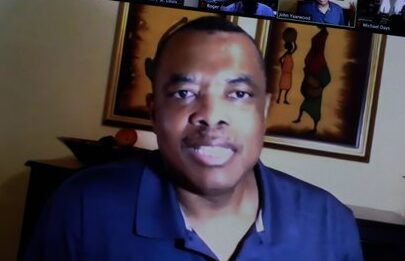 John Yearwood (pictured, from 2021) is one example. Formerly the global news editor at Politico, he was recently promoted to editorial director for diversity and culture. But before his promotion, one of his actions was to assign an article about Starr and his war coverage in Ukraine.
John Yearwood (pictured, from 2021) is one example. Formerly the global news editor at Politico, he was recently promoted to editorial director for diversity and culture. But before his promotion, one of his actions was to assign an article about Starr and his war coverage in Ukraine.
“I admired Terrell’s work for a long time,” he said at the Roundtable. Speaking directly to Starr, he said that now “I’m in the process of trying to bring more people who look like you and me to Politico.”
Yearwood mentioned Politico reporters Nahal Toosi and Joseph Gedeon as examples of journalists who bring different national and international perspectives to Politico’s coverage.
Bolden said that each of the four areas that are priorities for the American Press Institute — civic discourse and democracy, culture and inclusion, trust and community engagement, and revenue and resilience — “requires a commitment to diversity and to uplifting forgotten and unheard voices.
Rebecca Frank of the News Media Alliance and Samantha Ragland and Ellite Truong of the American Press Institute talk about their work with newsroom leaders on DEIB (diversity, equity, inclusion, and belonging) and encouraging a culture of experimentation in the newsroom in this April episode of API’s “News Take.” (Credit: YouTube)
“We thread it into all of our work, from Table Stakes, which focuses on transforming news organizations for a digital future, to Source Matters, our tool which focuses on bringing more source diversity into news coverage, to the API Inclusion Index, which examines diversity and inclusion at a macro level in news and information ecosystems and helps multiple news organizations craft and enact strategic plans to improve community engagement and trust.”
API’s recently completed Inclusion Index project involved the Pittsburgh Black Media Federation and five Pittsburgh-based news publishers, including the city’s leading newspaper, the Pittsburgh Post-Gazette. The National Association of Black Journalists awarded the Post-Gazette its Thumbs Down Award in 2020 for unfairly prohibiting two Black journalists from covering protests in the city following the death of George Floyd. It was among many who were alarmed by the Post-Gazette’s actions.
The API report noted that the “Pittsburgh news media ecosystem has significant deficiencies when it comes to inclusive practices both inside and outside of the newsroom,” but that “each newsroom has implemented some policies that, if expanded upon or adopted by other newsrooms, could provide the basis for larger transformations related to Diversity, Equity, Inclusion and Belonging, or DEIB, in journalism.”
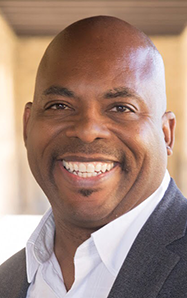 Bolden (pictured) added, “We are in talks with funders about deepening our work in Pittsburgh with more community listening and engagement for our news partners and possibly bringing in new ones. We’re also discussing other locations with community organizations and foundations, but we are not ready to make any public announcements.”
Bolden (pictured) added, “We are in talks with funders about deepening our work in Pittsburgh with more community listening and engagement for our news partners and possibly bringing in new ones. We’re also discussing other locations with community organizations and foundations, but we are not ready to make any public announcements.”
Some other Black media professionals question whether recommendations and initiatives like those go far enough.
McKinney, in an email, wrote that she sees U.S. news media as an institution “wired to play a dual role as both influencer and mirror of the larger society shaped by racism, sexism and ageism.” She cited as an example of the effects the findings of a recent study she commissioned by the Berkeley Media Studies Group that concluded that Black women — ”especially older Black women who can provide perspectives from potent lived experience as advocates, civic leaders, and experts in a vast array of sectors and subjects” — were significantly underrepresented in primetime cable TV news shows, even though they are “overperformers in electoral politics, advanced degrees, and business ownership.”
“What needs to change? Those who run and control the media. The advertisers who drive content. And the culture that embraces exclusion as an easier default than a reimagined projection of America’s ‘big tent.’ When the day comes that media decision-makers value the multi-hued people and cultures that make up our nation (and our world), there will be hope for fair and inclusive journalism. Until then, the status quo reigns.”
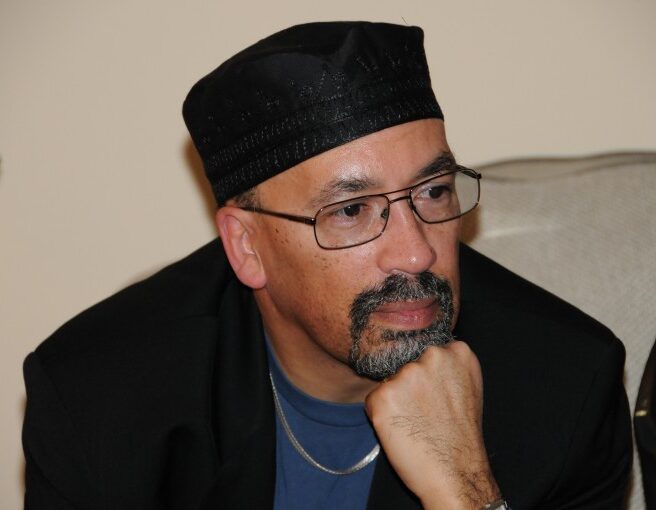 Bill Fletcher Jr. (pictured) a writer and activist who was a former president of the TransAfrica Forum, succeeding Robinson, said that mainstream media in the United States, tied as it is to a capitalist system, has an inevitable class orientation or bias that “is built into the way the machine works.” This bias, he said, “is simply not corrected by who gets hired and who gets promoted.” What’s necessary, he suggests, is “a reality check for the media” in the form of a grassroots advisory committee that has oversight over reporting standards, practices and priorities.
Bill Fletcher Jr. (pictured) a writer and activist who was a former president of the TransAfrica Forum, succeeding Robinson, said that mainstream media in the United States, tied as it is to a capitalist system, has an inevitable class orientation or bias that “is built into the way the machine works.” This bias, he said, “is simply not corrected by who gets hired and who gets promoted.” What’s necessary, he suggests, is “a reality check for the media” in the form of a grassroots advisory committee that has oversight over reporting standards, practices and priorities.
He is critical of existing media advocacy organizations, where he says the work “is all conducted in Latin” as far as average news consumers are concerned. He said he would like to see more of those consumers involved in pushing for better coverage of their communities.
“If it were up to me, every city would have its own public TV, radio, web channel, and some sort of news service that collected material from all over the world and made it available,” Fletcher said.
Asked whether public access fulfills that intent, Fletcher wrote, “Most public access tv that I have seen has been underwhelming. The programming is regularly mediocre. I am talking about something that is far more sophisticated and multilevel,” such as the news programming on PBS and on some of the major public radio stations. “We need something like PBS as a 24-hour news service. Then we need web programming along the lines of The Real News Network,” a nonprofit news organization that says it is dedicated to “rigorous journalism” that is “unafraid to engage alongside movements for change.”
The Center for Media Engagement at the University of Texas at Austin has launched the Solidarity Journalism Initiative to help media organizations improve their coverage of marginalized communities. “Solidarity journalism,” according to the initiative’s website, “means that journalists stand for basic human dignity and against suffering, and is practiced through newsworthiness judgments, sourcing, and framing that center the lived experiences of people subjected to unjust conditions. The decision to report – or not report – on these conditions inherently leaves neutrality behind.”
“It is a response to the misrepresentations produced by this inequity” between the privileged and the marginalized “and their failure to address the underlying causes of injustice,” said Brad Limov, graduate research assistant for the program.
The program holds virtual workshops, and its leader, assistant journalism professor Anita Varma, spoke last year at a packed session of the Asian American Journalists Association. The concept, Limov said, “has been well-received by journalists who hold social justice as an ethical priority and seek to better represent marginalized communities.” But he concedes that in the news industry as a whole, “they are perhaps in the minority.”
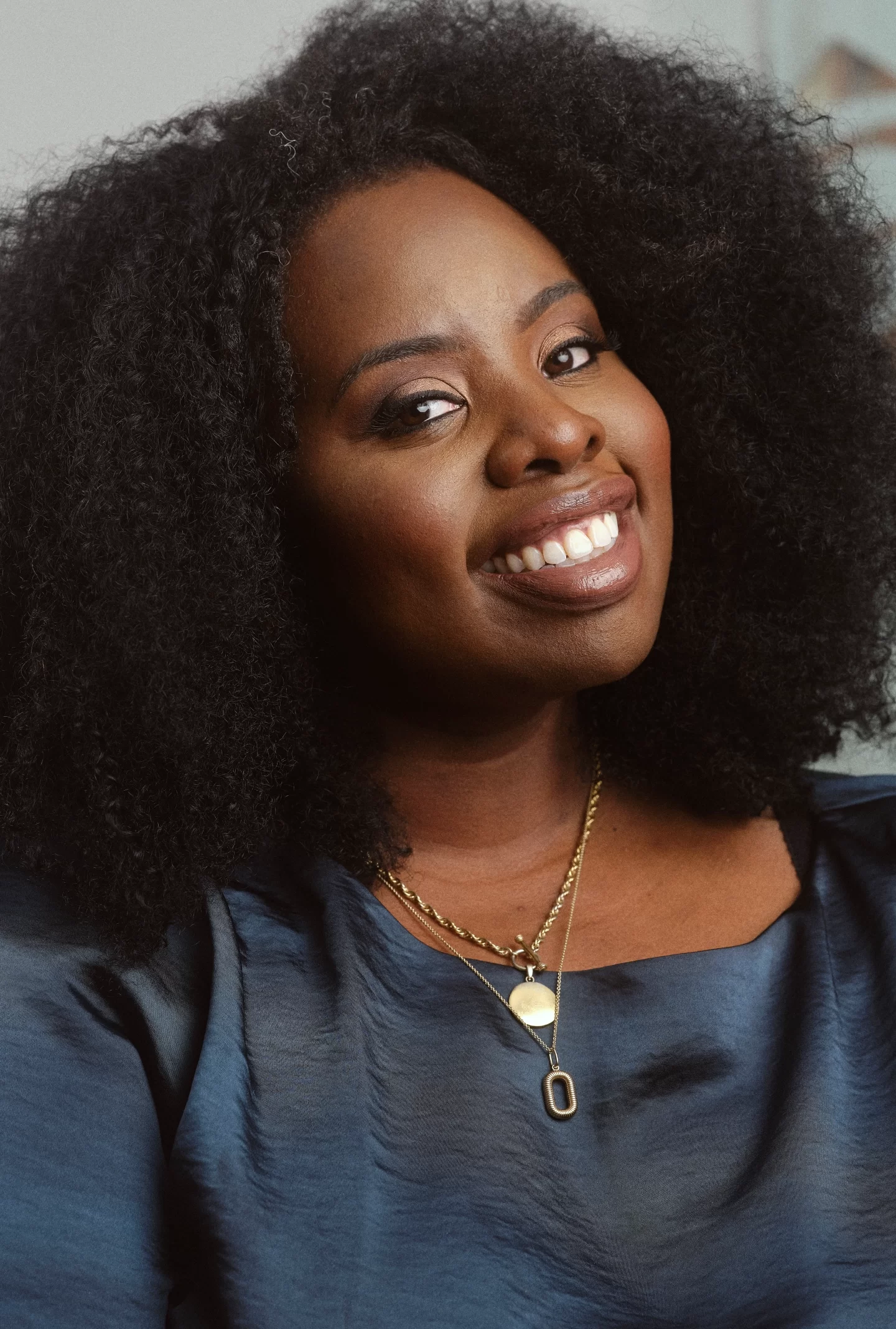 Akoto Ofori-Atta (pictured), co-founder of Capital B, a Black-led, nonprofit news startup, doesn’t use the term “solidarity journalism” to describe its philosophy. But she sees a difference in coverage about communities of color and coverage that serves communities of color. At Capital B, “we can provide service journalism that can help people navigate” the issues they face in their communities, she said, and “cast them as experts on how to navigate.”
Akoto Ofori-Atta (pictured), co-founder of Capital B, a Black-led, nonprofit news startup, doesn’t use the term “solidarity journalism” to describe its philosophy. But she sees a difference in coverage about communities of color and coverage that serves communities of color. At Capital B, “we can provide service journalism that can help people navigate” the issues they face in their communities, she said, and “cast them as experts on how to navigate.”
Ofori-Atta agreed that newsroom diversity must go beyond the complexion of the people in the room. “If your posture is that you can’t do the best journalism without the best representation, then the conversations you have are going to be very different than if you are just checking a box,” she said.
Ofori-Atta added that the collapse of the advertising model that sustained newsrooms for decades, a consequence of the rise of the internet, opens the door for all news outlets and for society at large to rethink how to reshape a news industry that is more reflective of and accountable to diverse communities as well as financially sustainable. “This is new terrain, and I’m glad we’re thinking very broadly,” she said.
- Natasha A. Kelly and Olive Vassell, Columbia University Press: Mapping Black Europe
- Mark Anthony Neal, The Root: Why Black People Should Care About Palestinian Liberation (video) (2020)
To subscribe at no cost, please send an email to journal-isms+subscribe@groups.io and say who you are.
Facebook users: “Like” “Richard Prince’s Journal-isms” on Facebook.
Follow Richard Prince on Twitter @princeeditor
Richard Prince’s Journal-isms originates from Washington. It began in print before most of us knew what the internet was, and it would like to be referred to as a “column.” Any views expressed in the column are those of the person or organization quoted and not those of any other entity. Send tips, comments and concerns to Richard Prince at journal-isms+owner@
View previous columns (after Feb. 13, 2016).
View previous columns (before Feb. 13, 2016)
- Diversity’s Greatest Hits, 2018 (Jan. 4, 2019)
- Book Notes: Is Taking a Knee Really All That? (Dec. 20, 2018)
- Book Notes: Challenging ’45’ and Proudly Telling the Story (Dec. 18, 2018)
- Book Notes: Get Down With the Legends! (Dec. 11, 2018)
- Journalist Richard Prince w/Joe Madison (Sirius XM, April 18, 2018) (podcast)
- Richard Prince (journalist) (Wikipedia entry)
- February 2018 Podcast: Richard “Dick” Prince on the need for newsroom diversity (Gabriel Greschler, Student Press Law Center, Feb. 26, 2018)
- Diversity’s Greatest Hits, 2017 — Where Will They Take Us in the Year Ahead?
- Book Notes: Best Sellers, Uncovered Treasures, Overlooked History (Dec. 19, 2017)
- An advocate for diversity in the media is still pressing for representation, (Courtland Milloy, Washington Post, Nov. 28, 2017)
- Morgan Global Journalism Review: Journal-isms Journeys On (Aug. 31, 2017)
- Diversity’s Greatest Hits, 2016
- Book Notes: 16 Writers Dish About ‘Chelle,’ the First Lady
- Book Notes: From Coretta to Barack, and in Search of the Godfather
- Journal-isms’ Richard Prince Wants Your Ideas (FishbowlDC, Feb. 26, 2016)
- “JOURNAL-ISMS” IS LATEST TO BEAR BRUNT OF INDUSTRY’S ECONOMIC WOES (Feb. 19, 2016)
- Richard Prince with Charlayne Hunter-Gault, “PBS NewsHour,” “What stagnant diversity means for America’s newsrooms” (Dec. 15, 2015)
- Book Notes: Journalists Follow Their Passions
- Book Notes: Journalists Who Rocked Their World
- Book Notes: Hands Up! Read This!
- Book Notes: New Cosby Bio Looks Like a Best-Seller
- Journo-diversity advocate turns attention to Ezra Klein project (Erik Wemple, Washington Post, March 5, 2014)

